(Part 2 of a 2-part article on Filipino Science Fiction)
Most Filipinos readers don’t know that the first Filipino Science Fiction story was written almost seventy years ago (making the Philippines, to my knowledge, the first country in Southeast Asia to have a written SF tradition).
The 1940s to 1960s: In the Beginning
[Newspaper advertisement for Teodorico C. Santos’ Exzur from October 1956, the first SF alien invasion film in Southeast Asia, later serialized by Nemesio E. Caravana.]
In 1945 Mateo Cruz Cornelio published a short 48-page Tagalog novel called Doktor Satan (by Palimbagang Tagumpay, Manila).
Docktor Satan was a R. L. Stevenson-inspired tale about a brilliant chemist and medical doctor Alberto Estrella who was desperate to find a cure for his mother’s terminal illness. After a batch of his secret formula restores a Russian suicide to life, he drinks his own medicine believing he’d found the secret to immortality. In a Dr Jekyll/Mr. Hyde turn of events, he gets transformed into a demonic being with red eyes, fangs and a pair of horns. The newly-monstrous Dr. Estrella goes on a rampage, destroying property and anyone in his way. He murders his fiancée Nena before he is finally killed by a police officer. His mother however, completely recovers from her illness.
Copies of Doktor Satan are now very rare and one of the few existing volumes can be found at the Rizal Library of Ateneo de Manila University.
Another early work was The Heart of Mathilda (Ang Puso ni Matilde) written in 1959 by author and film director Nemesio E. Caravana. This was a dark and brooding story reminiscent of Mary Shelley’s Frankenstein but with a touch of Alfred Hitchcock and H.P. Lovecraft.
Ang Puso ni Matilde was a Tagalog novel serialized by Aliwan (“Entertainment”) Magazine — which along with publications like Liwayway (“Dawn“) were among the most important venues for vernacular literature at that period (Caravana had previously serialized the 1956 movie, ExZur by People’s Pictures for Liwayway magazine. Both the comic and the movie featured the dramatic destruction of Manila’s City Hall, the Bureau of Posts building and Quezon Bridge by an armada of flying saucers.)
Caravana’s novel is about Dr. Lino Romasanta a good man whose one true love Angela is raped by an evil colleague. She later suffers a heart attack and dies. Dr. Romasanta just happens to be a skilled surgeon and he rescues his love by replacing her heart with a new one (although he keeps its source secret). The operation is successful but Angela’s behaviour starts to change — becoming more canine and feral. In the end it’s revealed that the heart he’d used belonged to his pet bulldog, the titular “Matilde” (note: it’s amazing how Caravana could get away with such a controversial tale during the very conservative 50s/early 60s).
“Hindi matingkala ang kagalakang nag-uumapaw sa puso ni Dr. Romasanta nang matapos ang kasal. Masigla at halos pasagsag na inilabas niya ng simbahan ang kanyang magandang asawa.
Gayunman, nang sila’y magkasama na sa awto ay hindi pa rin lubusang mapawi sa isipan ni Lino ang pag-aalaala. Baka sumpungin ng pagkaaso si Angela. Hindi nakaila kay Angela ang pag-iisip ni Lino.” – from “Ang Puso ni Mathilde” by Nemesio E. Caravana
“After they got married, Dr. Romasanta could barely contain the happiness overflowing from his heart. With great joy and enthusiasm he swept his beautiful wife out of the church.
However when the two of them were alone in his car, he began to worry that Angela would revert back to her canine behaviour. His new wife noticed his sudden introspection and wondered what the matter was.” (apologies for my poor translation)
Apart from the two novels mentioned above, comic book serializations were the only real source of Filipino Science Fiction stories in the 1950s and early 1960s — unfortunately most of them were of the pulp variety. The most interesting of these was Clodualdo del Mundo, Sr.’s “Tuko sa Madre Kakaw” (“Geko on the Madre de Cacao Tree”) from 1958. Del Mundo was a prolific novelist, playwright, essayist, short story writer, journalist, screenwriter, teacher and critic who was seemingly not content with his prodigious output of literary pieces. He also wrote numerous popular works such as “Binibining Pirata” (“The Lady Pirate“) and many other fantastic tales (“Salamankero” or “Magic Man“, “Planet Man“, etc.).
In this Island of Dr. Moreau-like story, a tormented, psychologically-unstable biologist, Tomas Montevideo, creates a serum that could increase the size of any animal to gigantic proportions. He tests this on an unwary gecko (the titular “tuko“) which transforms into a dinosaur-sized reptile with an unfortunate appetite for destruction. The main plot concerns a group of clueless teenagers who try not to get killed for the bulk of the story.
In 1959 “Tuko sa Madre Kakaw” was made into a movie of the same name in by director Richard Abelardo of LVN pictures. Sadly, this movie is now lost save for a few stills (which can be seen in film buff Simon Santos’ amazing blog Video 48).
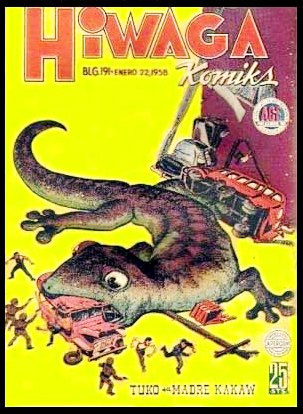
[Cover of the January 1958 issue of Hiwaga (“Wonder”) magazine with Clodualdo del Mundo, Sr.’s popular “Tuko sa Madre Kakaw”]
The 1970s to the 1990s: the Marcos Years and After
The next few decades were lean years for written Science Fiction. Philippine Literature in general was undergoing a transformation away from Romanticism and any author who did not write under the aegis of committed Social Realism risked not being taken seriously.
[Cover of the June 1950 issue of Komiks Magazine with Mars Ravalo’s classic super-heroine “Darna”]
Despite the fact that it was the height of the Space Age and the local popularity of such SF authors like Isaac Asimov, Frank Herbert and Robert Heinlein, as well as the popularity of Western genre movies like 2001: A Space Odyssey, Close Encounters of the Third Kind and Star Wars, very few Science Fiction works were produced in the period between the 70s and the 90s. However SF and its tropes flourished in local comic books such as Mars Ravelo and Nestor Redondo’s Darna and in film (e.g. the Kaiju movie Anak ng Bulkan “Child of the Volcano” by Emmanuel Rojas, a pioneering alien invasion pulp classic Excur by Teodorico C. Santos, the Filipino version of Heinlein’s Destination Moon, Zarex by Richard Abelardo, and the social commentary Aliwan Paradise by Mike de Leon).
[Movie still from Aliwan Paradise (Mike de Leon, 1992)]
Perhaps the only significant work from the 1970s was Tantaroo from 1971. Penned by famed Ilonggo writer Jose E. Yap (writing as Pedro Solano), this story remains one of the very few Science Fiction works in the Hiligaynon language (I don’t think it has ever been translated into English).
A decade later, the late Martial law period brought with it the first important English language Science Fiction short story — Gregorio Brilliantes’ 1981 piece “Apollo Centennial”.
Written as a commentary on the Marcos regime, it contemplated a future where Marcos’ corrupt and brutal New Society never went away. It is considered by many critics to be one of the finest English Language short stories ever written by a Filipino.
“Apollo Centennial” is set in 2069, a hundred years after the 1969 lunar expedition, and it tells the story of Arcadio Nagbuya, an indigent farmer who takes his family to see a travelling exhibit of artefacts and mementos from the now 100 year-old lunar landing.
The family’s journey is difficult, and in the narrative it’s revealed that while the rest of the world had moved on (to more wondrous high-tech futures), Filipino society had stagnated. The country had become an oppressive police state where traditional regional languages were suppressed in favour of a state-sponsored lingua franca called “Tagilocan”.
“His cousin clicks off the flashlight and speaks to him, not in Tagilocan, but in the old language and the tender fluid accents of their father’s tongue, unheard for so long yet never quite lost nor forgotten, bring a swift rush of pride and love that pushes back the enclosing dread.” – from “Apollo Centennial” by Gregorio Brilliantes
The story captured in beautiful yet searing prose one of the greatest fears of Filipinos – that nothing will ever change and that the Philippines will always be left behind.
Also in 1981, Jose Ma. Espino published the fairly obscure and very hard-to find Orbit 21, a collection of “twenty one tales of Science Fiction and Fantasy” (reprinted by Giraffe Books in 1999). Five years later, in October 1986, he would also release Into the White Hole (Cellar Book Shop). This book was probably the first YA S SF book ever written by a Filipino. (Note: I have not read either of these works as I am still trying to find copies. Source: Honey de Peralta).
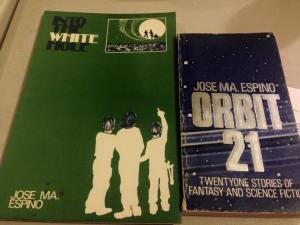
On the other side of the linguistic coin, infamous local author Arnel M. Salgado published a short novel 14 years later called Kidnapped by the Gods (Royal Press, 1995). This Erich von Däniken-inspired “metaphysical science fiction thriller” was the only SF novel written after 1959’s Ang Puso ni Mathilde until Eliza Victoria’s Project-17 appeared in 2013 (Clodualdo del Mundo, Sr.’s “Tuko sa Madre Kakaw” does not count as it was a comic serial) .
It makes for fun if difficult reading (although that was certainly not what the author intended), replete as it is with Salgado’s signature purple prose, as well as his “alternative” use of vocabulary and grammar rules.
“They walked finally going into their chamber whence the Time Diffusing Machine was positioned.
‘Go now!’ Captain Schmidt commanded.
Without a second, Evan Louis stepped forward thriving to a single flat form with a fibreglass walls.
Atop him was the device that could transfer him to light in order to wend the universe with pervasive space.” – from Kidnapped by the Gods by Arnel M. Salgado
However one feels about where Salgado fits in Philippine Literature — if he does at all (perhaps he is our equivalent of Henry Darger), all his works are certainly singular and entertaining. Kidnapped by the Gods is definitely no exception. However it’s somewhat distressing that this is one of the only Science Fiction works the country produced in an era that also created Jurassic Park (Michael Crichton, 1990), Neuromancer (William Gibson, 1984), Einstein’s Dreams (Alan Lightman, 1992) and Snow Crash (Neal Stephenson, 1992).
Also published in 1995 was Project Pawaii by Jose E.C. Añozo (New Day Publishers). This very rare volume was billed as “the first Filipino Cyberpunk novel” (Note: As with Jose Ma. Espino’s works, I have not read this book and I am still trying to secure a copy).
The 2000s and After: The Golden Age of Philippine Science Fiction
At the turn of the millennium Speculative Fiction got a much needed boost when the country’s most prestigious literary awards body, the Don Carlos Palanca Memorial Awards for Literature added the “Future Fiction” category (in both Filipino and English languages).
Future Fiction involved stories that the Palanca Awards committee said “looked beyond into the future to transcend the boundaries of the present.”
The first six winners in the year 2000 were “Kailangan” (“Required”) by Johannes Chua (First Prize, Future Fiction in Filipino), “Cell Phone” by George de Jesus III (Second Prize, Filipino), “Desaparecidos” (“The Disappeared”) by Alwin Aguirre (Third Prize, Filipino), “Subterrania” by Luis Joaquin Katigbak (First Prize, Future Fiction in English), “Secret Notes on the Dead Stars” by Lakambini Sitoy (Second Prize, English, appears in her anthology Jungle Planet by UP Press, 2005) and “The Field” by Adel Gabot (Third Prize, English).
Unfortunately, the Future Fiction category was discontinued less than a decade later, after much criticism from the mainstream literary community.
Writer and critic Butch Dalisay noted that there was something of “a disconnect” between the intent of the Palanca Awards committee to “encourage writing about the future” and the actual winning pieces — with some works more Fantasy or Realist than what could be pigeon-holed under the term “Future Fiction”. There were also questions about the quality of certain works, with some “old writing hands” intimating that one or more stories would have never won a Palanca had they competed in the general category.
[Movie poster from the film version of “Ang Pamilyang Kumakain ng Lupa” (“The The Family that Eats Soil”) by Khavn De La Cruz]
Despite these (IMHO mostly unfair) criticisms, many Palanca award-winning works like “Hollow Girl: A Romance” by Dean Francis Alfar, “Ang Pamilyang Kumakain ng Lupa” (“The The Family that Eats Soil”) by Khavn De La Cruz, “Virtual Center” by Raissa Rivera Falgui, “Kaming Mga Seroks” (“We the Xeroxed”) by David Hontiveros, “A Monumental Race” by Arturo Ilano, “Treasure Islands” by Karen Katrina G. Manalastas, “Turtle Season” by Timothy R. Montes, “Sidhi” (“Intensity” or “Strength”) by Yvette Uy Tan, and “Niche” by Catherine Rose Torres (just to name a few) were very well written and have greatly expanded the canon of Philippine Science Fiction.
“Hollow Girl first became aware of sound: a sudden thumping that repeated itself in an established rhythm. Without anything else to focus on, she was entranced, mesmerized by the regular beating of her heart. When vision came, her world exploded in light: colors and shapes that fought for her attention, swirling into clarity before being disrupted by the next image. Touch followed: the waft of warm recycled air from the atmospheric scrubbers on her skinsheath, the cool moisture on her face, the gentle caress of the polyfabrics that swathed her body in lieu of a mother’s embrace.” – from “Hollow Girl: A Romance” by Dean Francis Alfar
[A panel from the comic book version of “Hollow Girl: A Romance” by Dean Alfar with art by Jeremy Arambulo (from the graphic fiction anthology Siglo: Passion)]
We can only speculate what heights Philippine Science Fiction could be today if the Don Carlos Palanca Memorial Awards Committee had allowed the category to mature.
A further issue with the Palancas was that that many of these award-winning stories were only made available online for a short period of time — before they were filed away indefinitely. As such many excellent and interesting works of Science Fiction, Near-Future Fiction (“Last Bus Ride” by Pia Roxas) and Science Fantasy (“Espiritu Santos” by Pearlsha Abubakar) have gone out of the reading public’s reach. Perhaps one day the Palanca Awards Committee can publish a print compilation of all the winners of Future Fiction as has been done for the other Palanca categories.
The other notable award of the 2000s was the short-lived Fully Booked/Philippine Graphic Fiction Awards which had been partially sponsored by Neil Gaiman (Collected in the anthology Expeditions with a foreword by Neil Gaiman). This contest had produced a couple of interesting Science Fiction works including “The God Equation” by Michael A. R. Co, the absurdist Science Fantasy story “The Great Philippine Space Mission” by Philbert Ortiz Dy (in which space travel is possible via a rocket powered by human gossip) and Ian Rosales Casacot’s “A Strange Map of Time”, a complex lyrical narrative about a man lost in time.
“The year was 2139. In the growing brightness of dawn, he could see Dumaguete in full light minus the distractions of flying traffic and the moving wind of grayness that obscured most of the daytime skies…He felt he understood how the city worked, how it negotiated through endless revolutions of time and memory.” – from “A Strange Map of Time” by Ian Rosales Casacot
Other venues for Science Fiction that first appeared in the 2000s or first published fantastic fiction include Story Philippines (Founding Editor, Jade Bernas), Philippine Graphic (“Matrice” by Dominique Gerald Cimafranca) and The Philippines Free Press. The latter, in particular, published many excellent genre works such as “Keeping Time” by FH Batacan (which won First Prize in the Short Story category of the Free Press Literary Awards in 2008). There was also the beautifully illustrated Usok or “Smoke” (Founding editor Paolo Chikiamco of the Fantastic Fiction blog Rocket Kapre), which featured mostly urban fantasy stories but also had SF works like Chiles Samaniego’s “The Saint of Elsewhere”; and Philippine Genre Stories (founding editor Kenneth Yu) which published Nikki Alfar’s “Selected Transmissions from Synthesized Human Emulation Mk.8.014b, Otherwise Known as ‘Katey’” and Rochita Loenen-Ruiz’s “The Song of the Body Cartographer”. This excellent short story was nominated for the British Science Fiction Association Awards in 2013.
“Siren traces the marks on Inyanna’s body. There are concave hollows in Inyanna’s arms, and there are connectors along her ribs that allow her to jack into her windbeast when she is in flight. Under Siren’s fingers, the patterns on Inyanna’s shoulders register as bumps—like tiny hills grouped together in circles that wind in and around each other.” – from “The Song of the Body Cartographer” by Rochita Loenen-Ruiz
In 2005 Dean and Nikki Alfar published the first volume of Philippine Speculative Fiction (PSF). Their manifesto was simple:
“To find the fantastic, we must create the fantastic. We must write it ourselves, develop it brick by enchanted brick. We must write literature that unabashedly revels in wonder, infused with the culture of our imagination – which means being Filipino and surrendering that very same limiting notion – being more than Filipino, unleashing the Filipino of our imagination, simultaneously divorcing and embracing the ideas of identity, nationhood, and universality.”
No other series of books has contributed so greatly to the acceptance of Fantastic Literature by local authors and the general reading community. PSF has even made inroads overseas, where its various volumes are often cited when discussing the Filipino Speculative Fiction scene (full disclosure: Nikki Alfar and her co-editor Kate Aton-Osias were responsible for my first published story, “Resurrection” in PSF volume 6).
[Cover art for the e-book versions of the first six volumes of Philippine Speculative Stories]
In terms of Science Fiction, the many volumes of PSF have contained numerous gems like “The Doppler Effect” by Tyron Caliente, the Steampunk (perhaps more accurately “Wood Punk”) “On Wooden Wings” by Paolo Chikiamco, “Prisoner 2501” by John Philip Corpuz, “The Sky Gypsies” by Timothy James Dimacali, “The Midwife” by U Z Eliserio, “An Introduction to the Luminescent” by Pocholo Goitia, “Dino’s Awesome Adventure” by Carljoe Javier, “Reclamation” by Angelo Lacuesta, “From the Book of Names My Mother Did Not Give Me” by Christine V. Lao, “Stations” by Gabriela Lee, “Brigada” by Joseph Nacino, “Gunsaddled” by Alexander Marcos Osias (Science Fantasy), “A Retrospective on Diseases for Sale” by Charles Tan (The Philippines’ SpecFic ambassador-at-large whose Bibliophile Stalker blog has been nominated for a World Fantasy Award), “The Ascension of Our Lady Boy” by Mia Tijam (more Science Fantasy and one of the first Specfic stories to explore LBTG themes), “Parallel” by Eliza Victoria, “Sink” by Isabel Yap and especially the hauntingly beautiful story “Ashland” by Elyss Punsalan (also appears in the anthology How to Live on Other Planets: A Handbook for Aspiring Aliens along with Dean Francis Alfar’s “Ohkti”).
“She removes her mask and sings the first lines of a folk song. The rabbit hole echoes, ‘O naraniag a bulan, un-unnoyko’t imdemgam…” The words warble through bits of faded grating, jarring, burring, jangling, clicking and clanging. Ghosts of the Hub doors closing, the windows relenting, the Leviathan pushing, her heart pulsing, her lungs expanding, her mouth screaming. The song thins and wears out, and the rabbit hole empties itself of her voice.” – from Ashland by Elyss Punsalan
The first-ever anthology of Filipino Science Fiction came out online in January 2012 (and in print the following year). Edited by Joseph Nacino and Emil Flores, Diaspora Ad Astra was a collection of 15 short stories which “dwelt less on gadgets” and hard science and more on what the editors said was “the human face of this technology – specifically how we Filipinos will live with these new technologies.” Among the outstanding stories were Dean Francis Alfar’s space opera “The Malaya” and Isabel Yap’s “A List of Things We Know”.

Speaking of firsts, prolific Speculative Fiction author Eliza Victoria published Project-17 in 2013, a fast-paced, social-media savvy near-future thriller about a care-giver caught in a great mystery. The story’s resolution leads to a chilling revelation about the true nature of who runs the world. This is perhaps the first modern Science Fiction novel published in the Philippines by a Filipino (Salgado’s Kidnapped by the Gods and Añozo’s Project Pawaii notwithstanding).
Speed Magazine (Dec, 2013) called Project-17 “a social commentary on so-called modern-day systems that aim to examine, dissect, and de-familiarize the day-to-day city dwelling of ordinary citizens.”
“In some provinces the Sentries still looked like the policemen of old – blue uniforms, bare faces – but in major cities the Sentries were all dressed in black, their eyes covered by a black shield made of glass, making them look like Zoned-out citizens. They lined Ayala Avenue, where Northpoint-Pascual’s main offices were located inside Pascual Tower, a glass-and-steel building 10 stories high. From the sidewalk, a pedestrian could look directly through the glass wall and observe the lobby like a child looking at fish. Insured and well-compensated fish.” From Project-17 by Eliza Victoria
What’s next for Philippine Science Fiction?
Filipino Speculative Fiction authors have now begun to get published internationally with Dean Francis Alfar being the best known, (especially for his much-anthologized fantasy work like “L’Aquilone du Estrellas” which initially appeared in Strange Horizons).
In terms of Science Fiction, Clarion West-graduate Rochita Loenen-Ruiz leads the pack with stunning works of short fiction that often combine high technology and alien cultures with imagery from Philippine mythology and traditions. Her many works include “Of Alternate Adventures and Memory” which appeared in Clarkesworld in 2013,”Alternate Girl’s Expatriate Life” in Apex Magazine in 2012, “What Really Happened in Ficandula” in We See a Different Frontier (A Postcolonial Science Fiction Anthology), and the incredibly beautiful “Dancing in the Shadow of the Once” in Bloodchildren: Stories by the Octavia Butler Scholars, both anthologies from 2013 (also appears in Alex Dally MarFarlane’s Mammoth Book of SF Stories by Women with “Excerpt from a Letter by a Social-realist Aswang” by Kristin Mandigma).
Filipino Science Fiction has also appeared in Apex Magazine, Bewildering Stories (“Packing for the Moon” by Dean Francis Alfar), Expanded Horizons (“Once They Were Gods” by Eliza Victoria), International Speculative Fiction (“59 Beads” by Rochita Loenen-Ruiz – Also appears in Apex), Lakeside Circus (my story “How my Sister Leonora Brought Home a Wife”) and international anthologies such as Fish Eats Lion: An Anthology of New Singaporean Speculative Fiction (“Mirage” by Noelle de Jesus) and Lontar: The Journal of Southeast Asian Speculative Fiction (“Departures” by Kate Aton-Osias).
[Cover for the first issue of Lontar: The Journal of Southeast Asian Speculative Fiction]
What I want to See
I would like to see more Filipino Science Fiction in the coming years in English and in the various Philippine Languages – especially from new and unfamiliar names of younger folks, from every gender and gender preference.
I would also like to see someone write a Philippine SF story that is wholly Filipino and free from the colonial mindset and trappings that most writers (myself included) find very hard to escape from.
Lastly, I would like to see a Filipino Science Fiction author being shortlisted for the Hugo or Nebula awards. Perhaps Dean Alfar or Rochita Loenen-Ruiz will get a story in and win — or perhaps it will be you, dear reader.
Who knows, anything can happen in Science Fiction.
Update: I am very pleased to announce that Alyssa Wong, a graduate of the famous Clarion workshop has become the first Filipino nominated for a Nebula for the Story “The Fisher Queen” which appeared in Fantasy & Science Fiction last May 2014. Here’s a great interview at SFSite.
Sources: Dean Francis Alfar, Roberto Añonuevo, Butch Dalisay, Paolo Chikiamco, Timothy R. Montes, Elyss Punsalan and Charles Tan
All images used in this post are owned by their respective artists/owners.
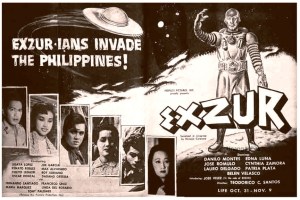
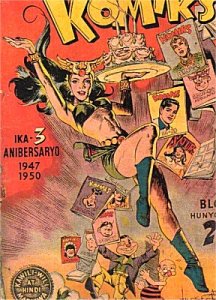

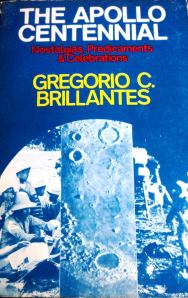
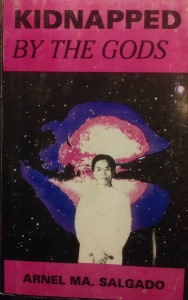

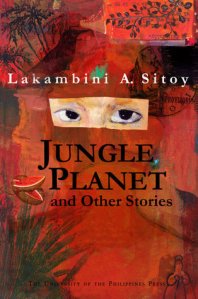
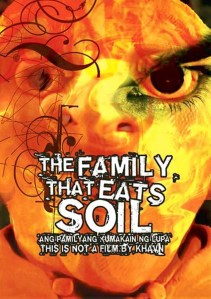
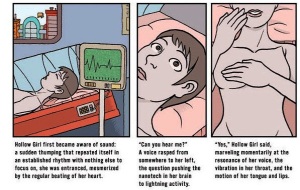
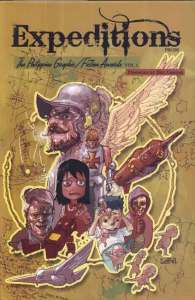
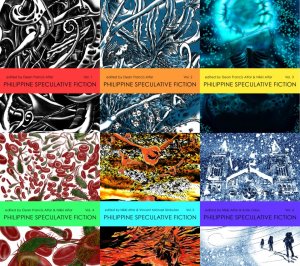
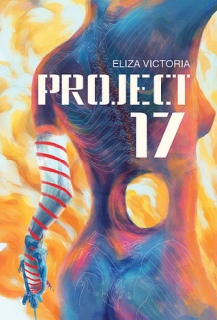
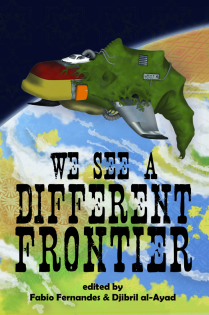
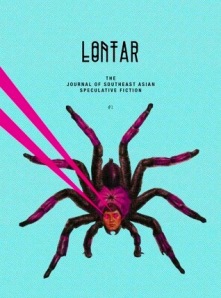
[…] Part 2 (where the excerpt above came from) from here. […]
[…] fiction in the Philippines/A short and incomplete history of Philippine science […]
Kudos to this article. I once attempted to look for articles regarding Filipino Science Fiction and a decade ago it was so scarce and almost no one ever bother to write about it. Particularly what I was looking for were short stories of science fiction in the Filipino language as I was engaged in writing these type of stories after finishing university. I stopped trying after a couple of years but still holding on to my blogs at scipinoyfi.blogspot.com and kuento.wordpress.com . I am awe inspired though to write again regularly so that I may contribute to our literature and something I can share with my son as he grows up in this now high tech-digital age that we lived in. Many thanks.
thank you for including liwayway and earlier tagalog works. i was exposed to them growing up, but finding old copies to show as proof to the rest of the world is HARD.
Lopez Museum has a large public archive of Liwayway and other magazines from the 50s and 60s.
did not know this. must spread the word. thank you!
I own Jose Ma. Espino’s Orbit 21. It’s really interesting!
This interests me greatly, the value of Science Fiction from any culture other than the Anglo-American mainstream, giving another view of possible futures / pasts is I guess what SF really should be about.
I organise smallish Free Entry SF&F conventions in Sydney Australia and I would like to include some coverage of Science Fiction from the Philipines. Before I write to the (several) Australian Pinoy community newspapers, do you know of any Sydney resident Pinoy SF fans who could deliver an explanation about the Philipines English and non-English SF traditions?
Wishing you well in all things.
Garry P Dalrymple
Convenor Sydney Freecons, 2000-2018
Hi Gary, not off hand but let me ask.
Hello! Are you still looking for a copy of Espino’s Orbit 21? If you are, try going to Booksale branches next time you’re in the Philippines. Booksale branches nowadays will usually have a stack or two of Giraffe books (Orbit 21’s 1999 publisher). I found my copy in one of those. Good luck! 🙂
Thank you so much for the tip Yan. I have since been given a copy by a friend. I would like to pay this forward by sending you a copy of my book next time I am in Manila. If you are interested please send me your address at vrocampo (at) gmail.com.
Thank you so very much, kind sir! Sent you an email! ^_^
Excuse me, but I found your site while looking for a sci-fi novel I read in the early 90s but can’t remember the title or author. I’m not sure if the author was Filipino but Filipinos/The Philippines played a big part in the tale.
The story is about large space station/space colonies orbiting Earth when a nuclear war erupts and destroys civilization and these outposts have food production problems. Although there may have been more than three stations the focus of the novel is on one operated by the Soviet Union, one is American (I think owned by a corporation) and one operated by The Philippines. The Soviets (I think) plan on attacking other stations and steal their stores, the American solution is to throw non-essential personnel into space and the Filipinos try and stop the madness as one of their scientists has created a food source out of seaweed of algae that will feed everyone.
If you know the tame of this tale, please do tell! Thank you.
I’m sorry but I am not familiar with this novel if you find it please let me know what is the name of the book and who is the author. Thank you.
hi! this is a very fascinating article!
there’s one more instructive entry that is unique in more ways beyond just being Pinoy sci-fi: the 1959 “La Creación”, by Mariano L. dela Rosa, is probably the only Pinoy (and for that matter, the only Asian) sci-fi novel … in the Spanish language. (at that time, of course, Pinoy Spanish lit was already on its last legs with most anyone able to understand it dead by WWII, let alone write in it, but … well, there were survivors.)
basically it has a bunch of international scientists meeting in Manila to put up a theory that human races come from various planets, and the scientists’ kids test this theory by exploring those planets in a spaceship for clues to humanity’s ancestry. the text was only found c 2008. American scholar Adam Lifshey discusses it in one chapter of “Subversions of the American Century: Filipino Literature in Spanish and the Transpacific Transformation of the United States”.
Hi Mike. Thank you so much for letting me know about this. I am already trying to track it down.
[…] Vida Cruz, Nikki Alfar, Kate Aton-Osias, Joel Donato Ching Jacob, Victor Ocampo (check out the history of Filipino Science Fiction on his blog!), Ian Rosales Casocot, Anne Lagamayo, Christine V. Lao, Mia Tijam, Nicasio Andres […]
Hi Vic, thanks for including Pawaii. Great apologies ngayon ko lang nakita.
You’re very welcome.
[…] stab at documenting the early days of local Science Fiction (check out my original 2014 post here). This time, I attempt to identify the oldest known Filipino works of Fantasy, Horror, and of […]